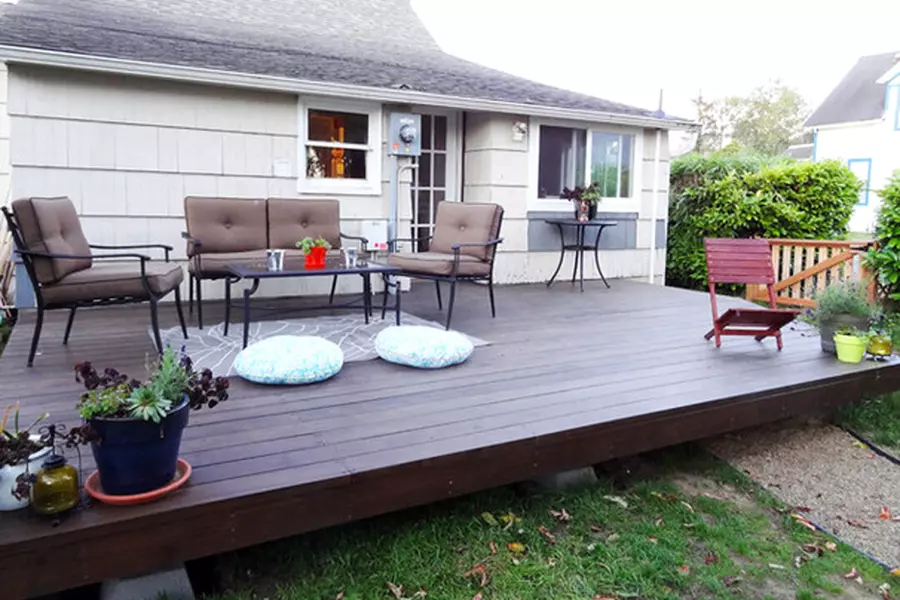Article Body.
A ground-level pier deck offers an alternative and easier approach to traditional cement footings for those looking to build a deck themselves. Unlike conventional decks that require digging holes and pouring cement for footings, this system uses solid concrete blocks that float on top of the soil, distributing weight evenly across the area. As it is ground-level, you can eliminate the need for digging and mixing cement, making the construction process more manageable for DIY enthusiasts.
The pier deck’s framework is designed to stand free from the house, unlike a conventional deck attached to the structure. The cement pier foundation sits directly on the ground with slots in their tops, holding either vertical posts or horizontal support boards depending on the desired height of the deck. Once these are in place, the decking can be securely fastened to the framework.
When planning your deck project, it is essential to contact your local building department to determine whether a permit is required. Decks built close to property lines may also need to adhere to certain boundary restrictions, so familiarize yourself with your survey and property limits before beginning construction.
The cost of hiring a professional contractor to build a small, basic, 12-by-15-foot rectangular ground-level pier deck using composite surface decking would be around $2,090, including labor and materials. However, an ambitious DIYer can save up to 66% on this cost by purchasing the necessary materials and building the deck themselves. The materials needed for such a project include concrete piers, 4-by-4 posts, 2-by-6 joists, decking, and deck screws.
Building a pier deck is not an easy task; it requires heavy lifting and labor-intensive work with various power tools. To complete this project, you will need a carpenter’s level, circular saw, and power screw gun at your disposal. It is essential to plan your time effectively when undertaking such a project, ensuring that you have the necessary tools and resources available before starting construction.
For more information on DIY projects, their costs, and related discussions, visit websites like www.diyornot.com and m.diyornot.com on smartphones to connect with other enthusiasts who share your passion for creating beautiful outdoor spaces.

